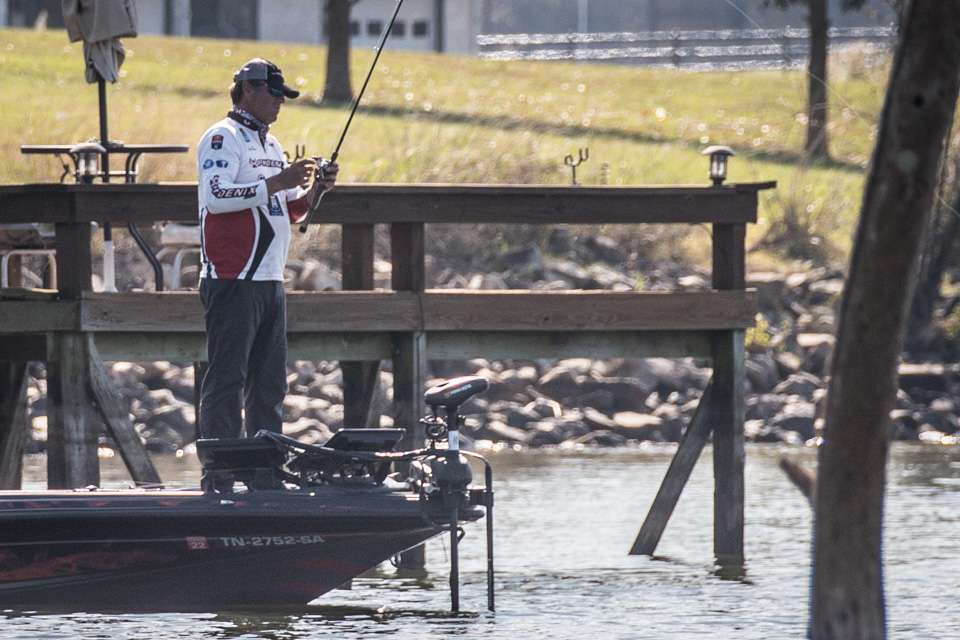
Let’s be honest about something. The fall can be the toughest time of the year to catch bass. The reasons for that aren’t all that complicated, but the solution can be frustrating. To go to a lake that you know simply “has them,” and you are still struggling, can be very frustrating.
In most lakes and rivers bass at this time of the year scatter. During the other seasons they’re much more predictable. Prespawn, spawning, postspawn and summer bass tend to hold in predictable places. Experienced anglers know where to look. Once you find them you can usually find others in similar places.
The fall is different. The bass are scattered all over the place. Some of them might be 30 feet deep. Others might be 6 inches deep. Some of them will be out in the main lake. Others will be up in the creeks and cuts. And, they don’t usually school in big numbers — at least not until the very end of the season.
You’ll find one or two here and one or two there. We anglers are much less efficient in the fall. Our lure is simply not in front of a bass as much as it is at other times of the year. One of the primary reasons for this is what the baitfish are doing. They aren’t necessarily shallow, but they are starting to group up and move. On top of that the water isn’t cool enough so they’re not dying.
The bass will tend to follow the schools. They aren’t necessarily in one place very long, and their movements don’t always follow a set, or logical, pattern. Nevertheless, they provide a plentiful and easy food source for bass looking to get ready for winter.
So, our electronic units aren’t as useful as they are at other times of the year. Sure, our electronics will find them on offshore areas if there are some schools still out there. In my experience there are less schools out offshore, and less fish in them.
If there is grass such as hydrilla or milfoil in the lake you are fishing, the bass will bury up in it and become hard to find. Multiple casts with a frog or punching into it is usually your best bet. But you might not get many bites per day.
The use of new technology like the Garmin Panoptix LiveScope and Humminbird MEGA 360 can help us see offshore grass and will help at times.
Another thing you might do to catch more bass is to target the more aggressive species. I’m talking about spots and smallmouth. If you are fun fishing and just want to get bites, you might consider this. Going to a lake with a good spotted bass population like Lanier might turn out to be a better fishing trip than say going to Chickamauga in the fall.
But in a tournament situation you might not have a choice. In those situations it’s important to stay patient. It’s easy to spinout thinking everyone is catching them, and you’re not. Then you get to the weigh-in and find out that if you had simply stayed patient and got a couple more bites you would have done better in the standings.
All in all, the fish are scattered, less aggressive and generally harder to catch in the fall. But those of us who love the game will still be out there.





